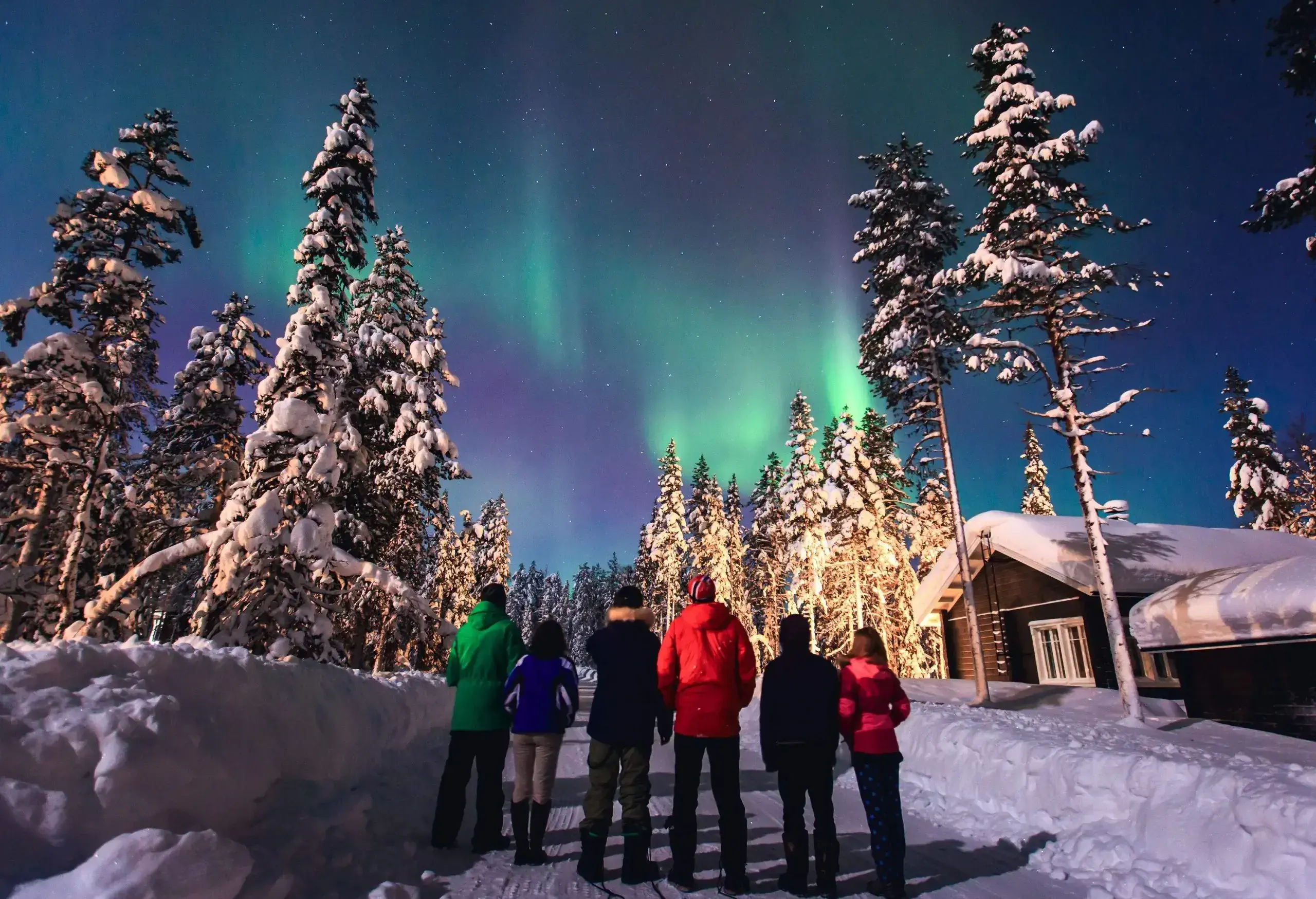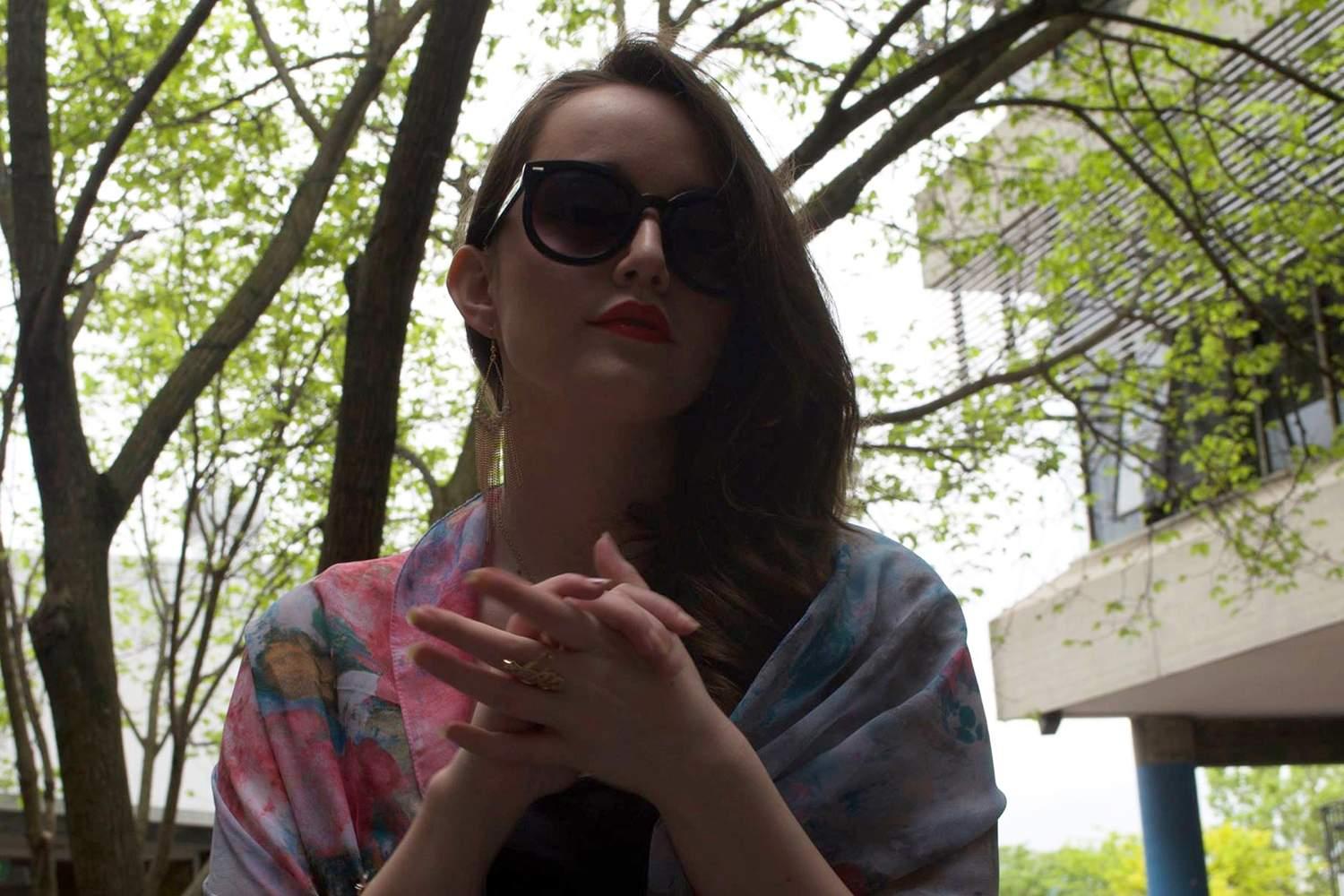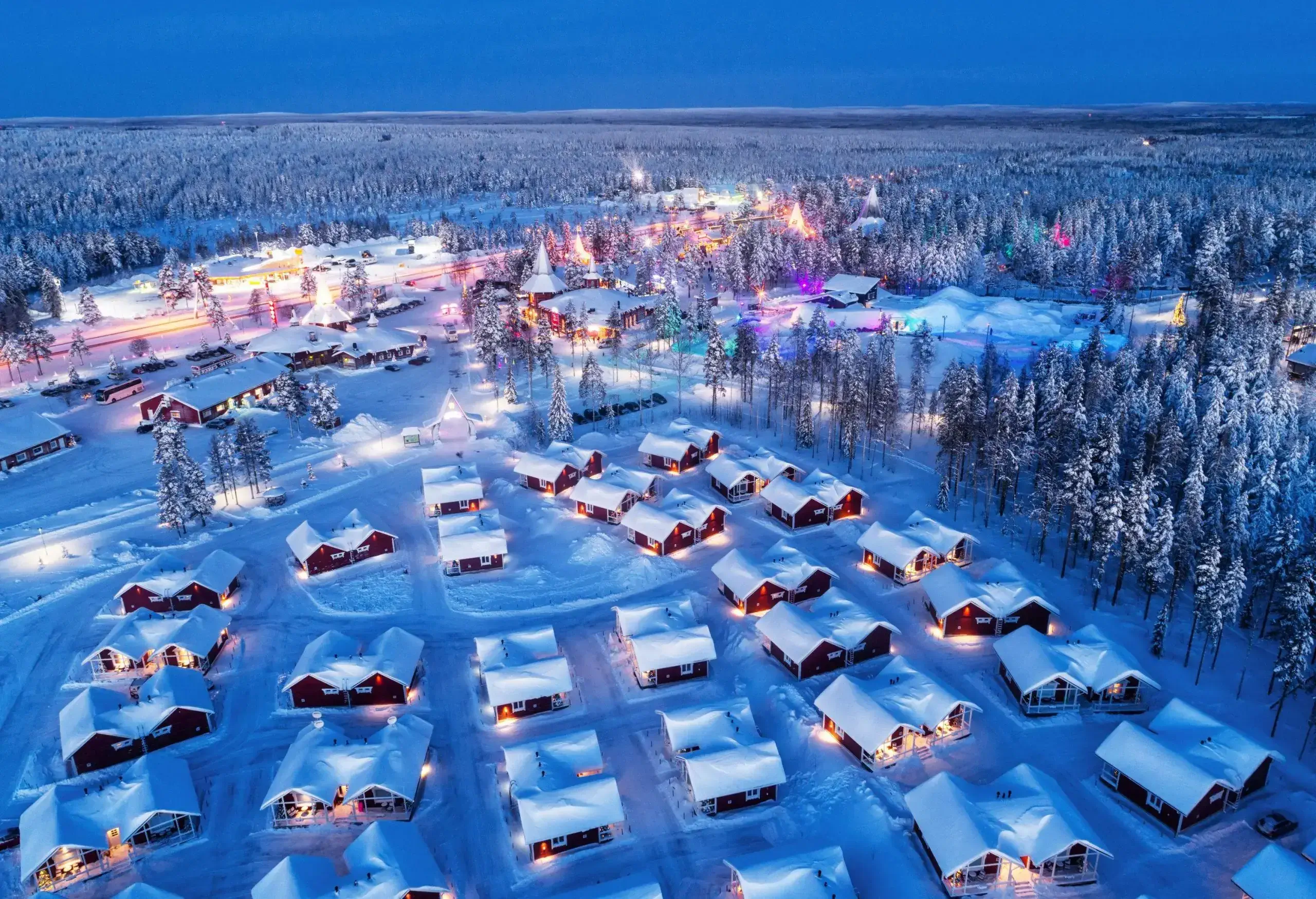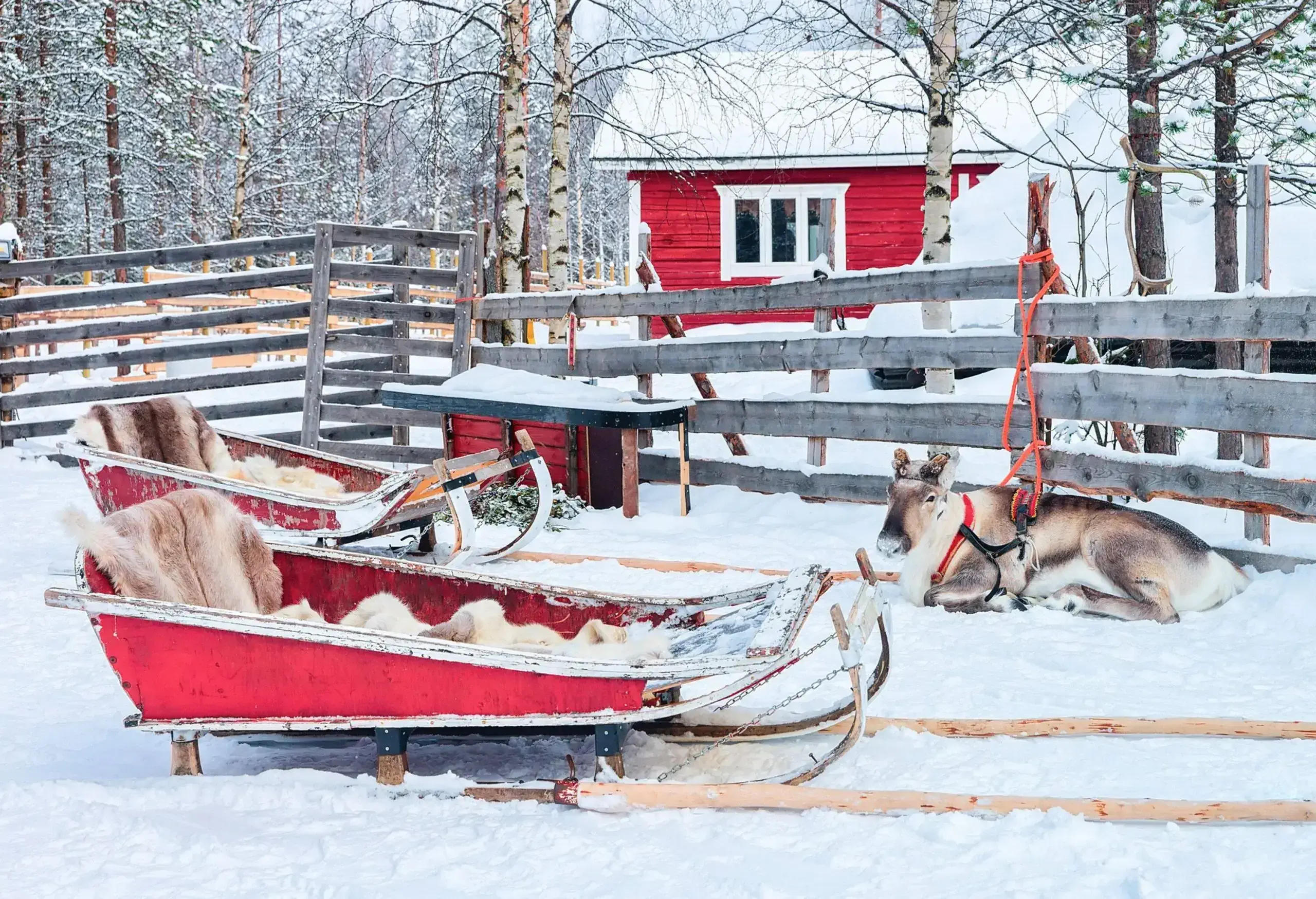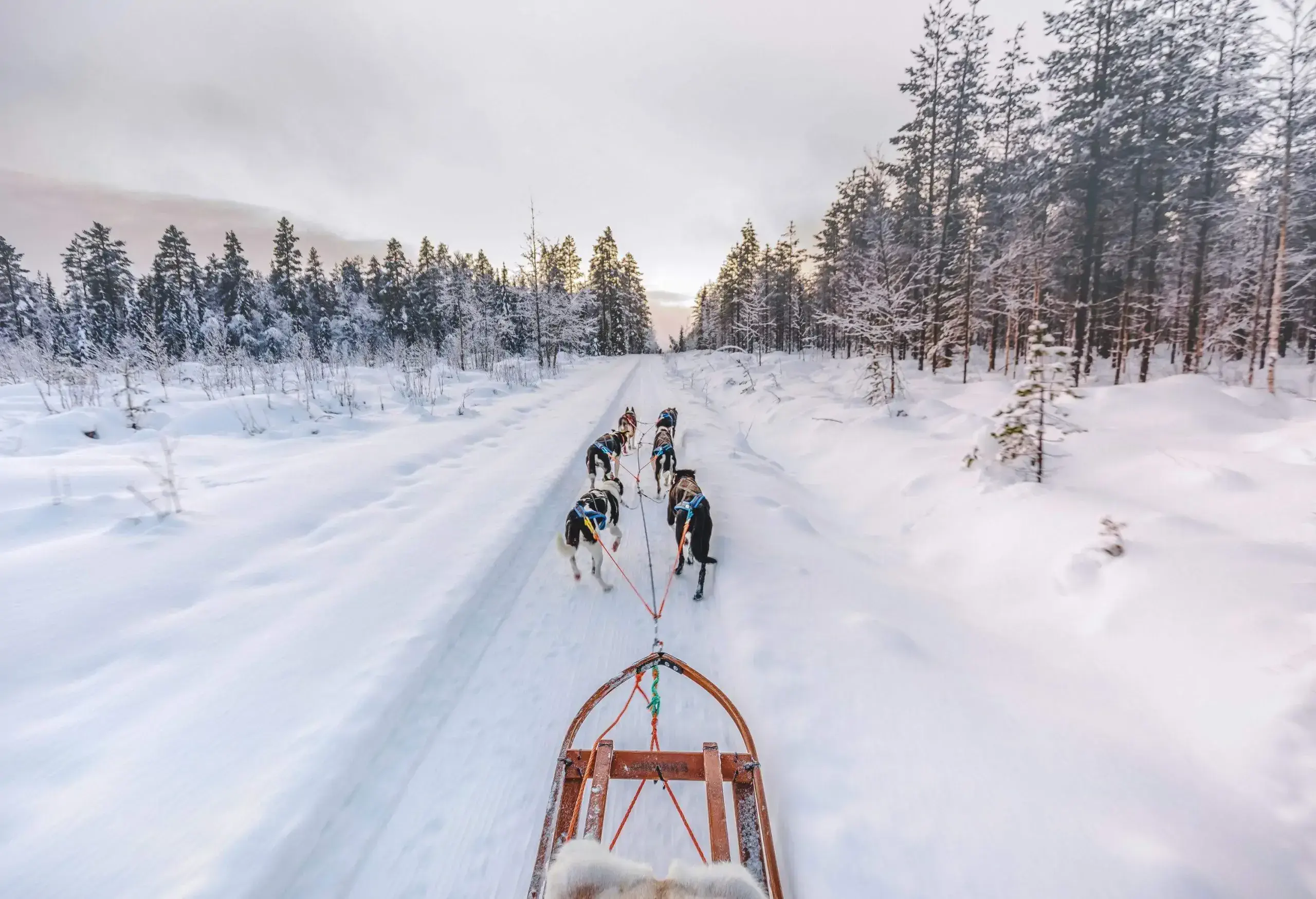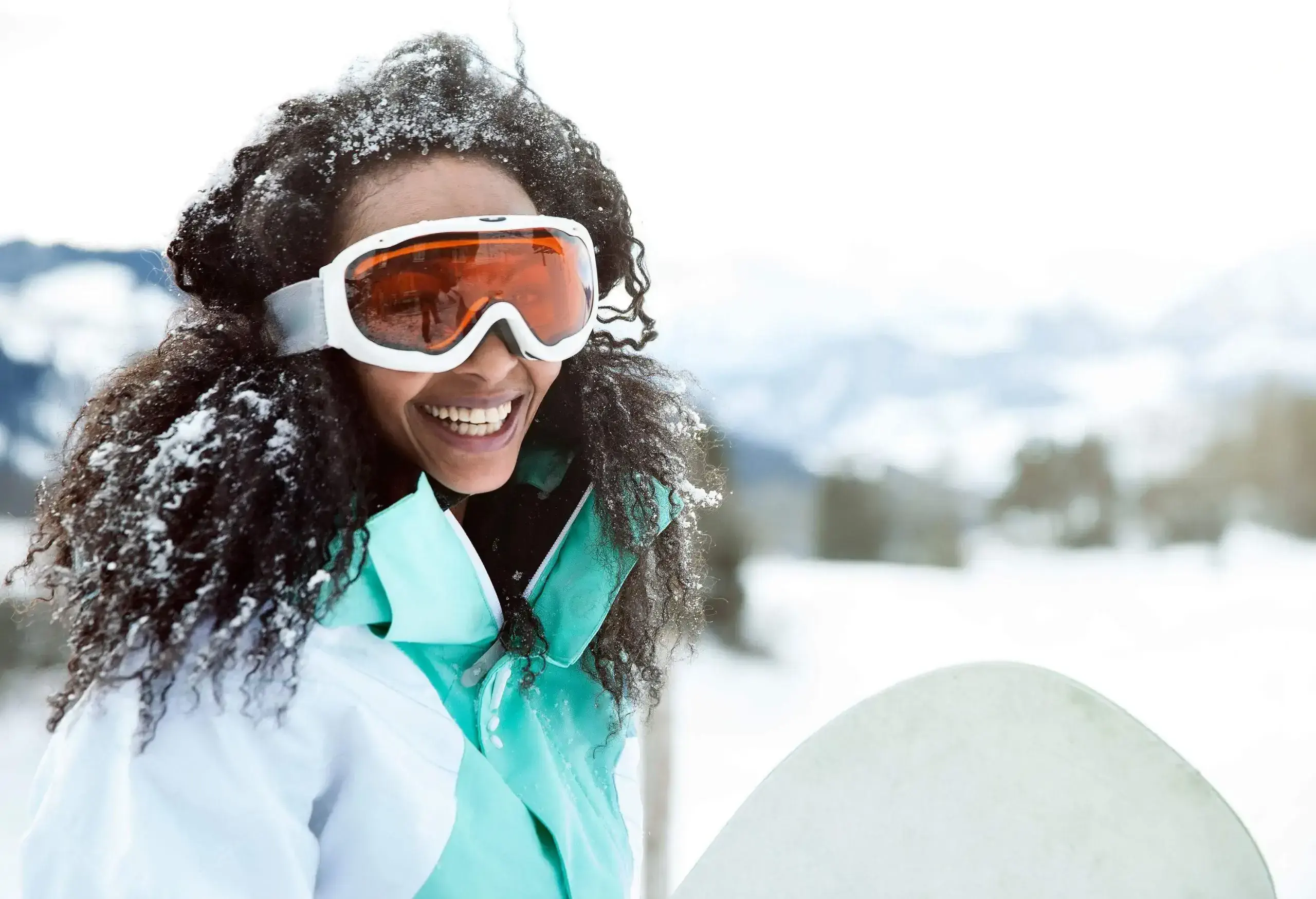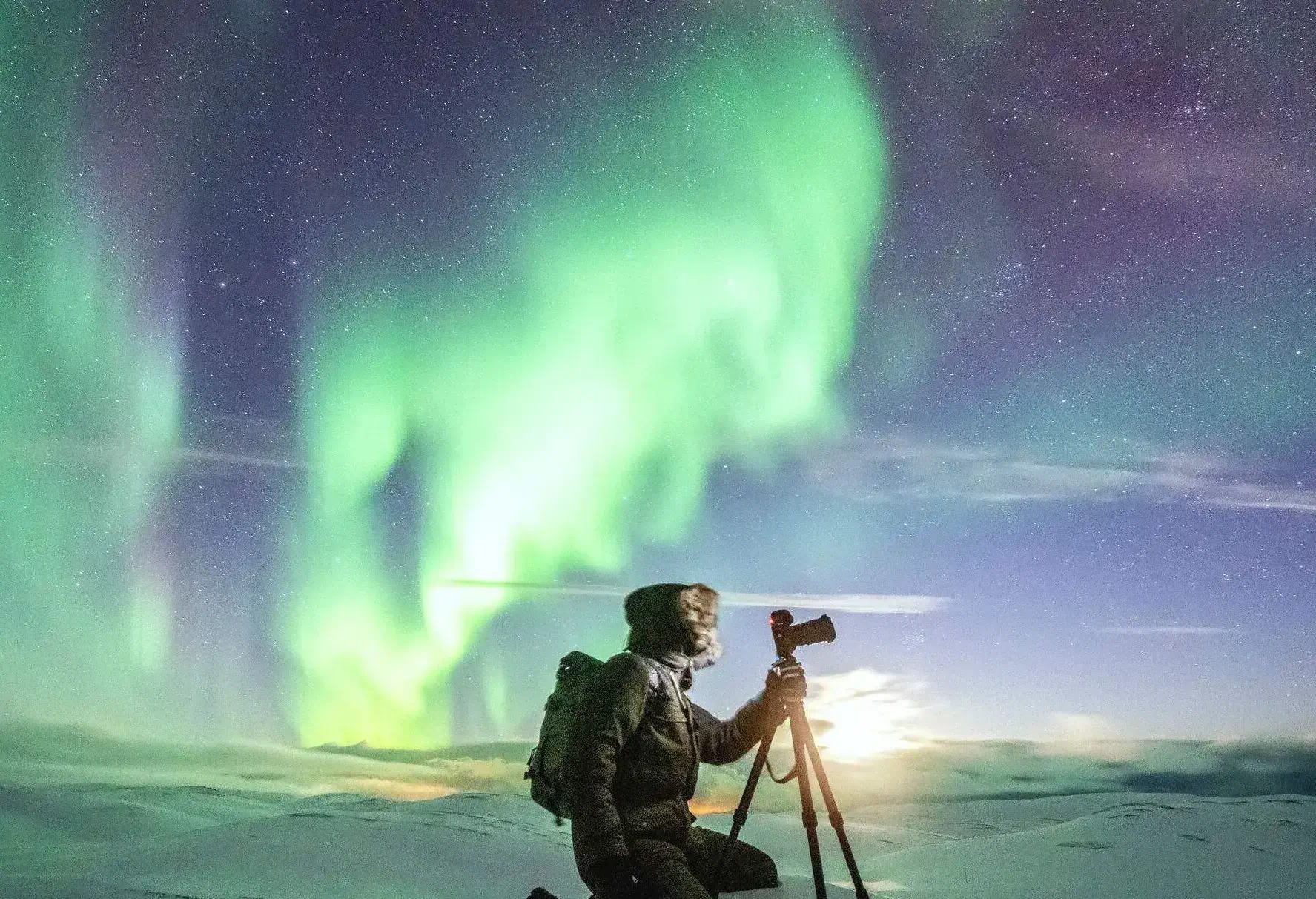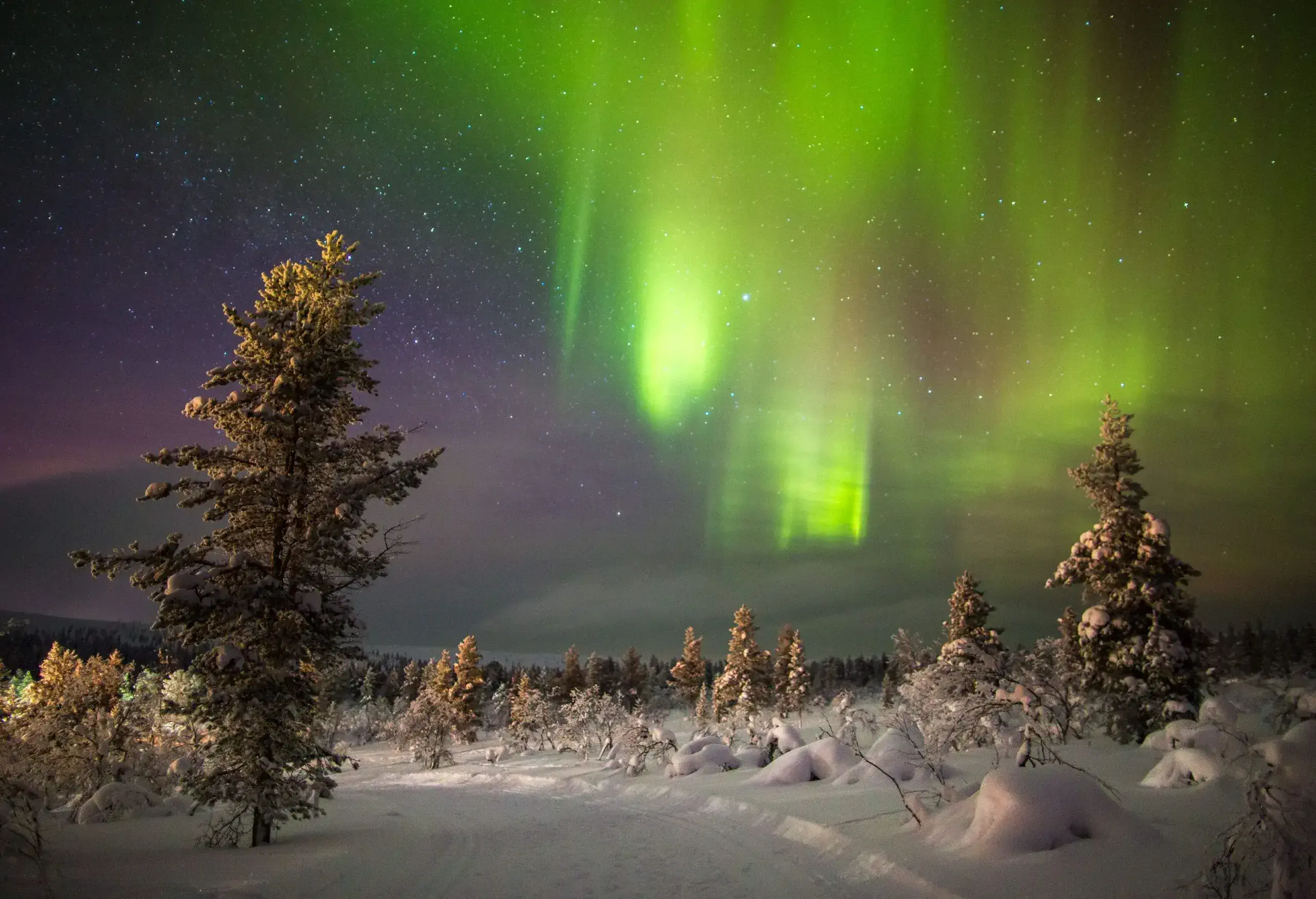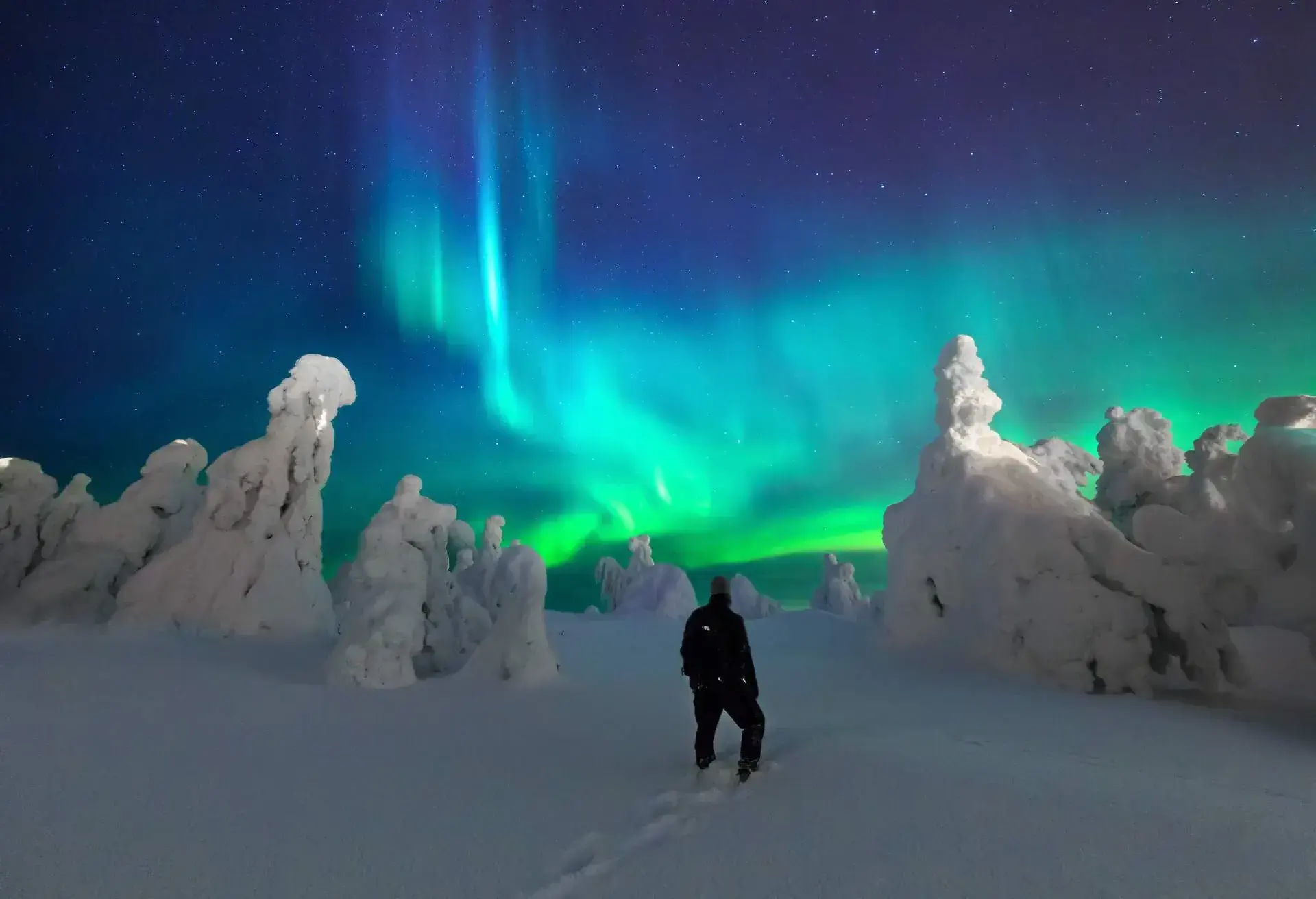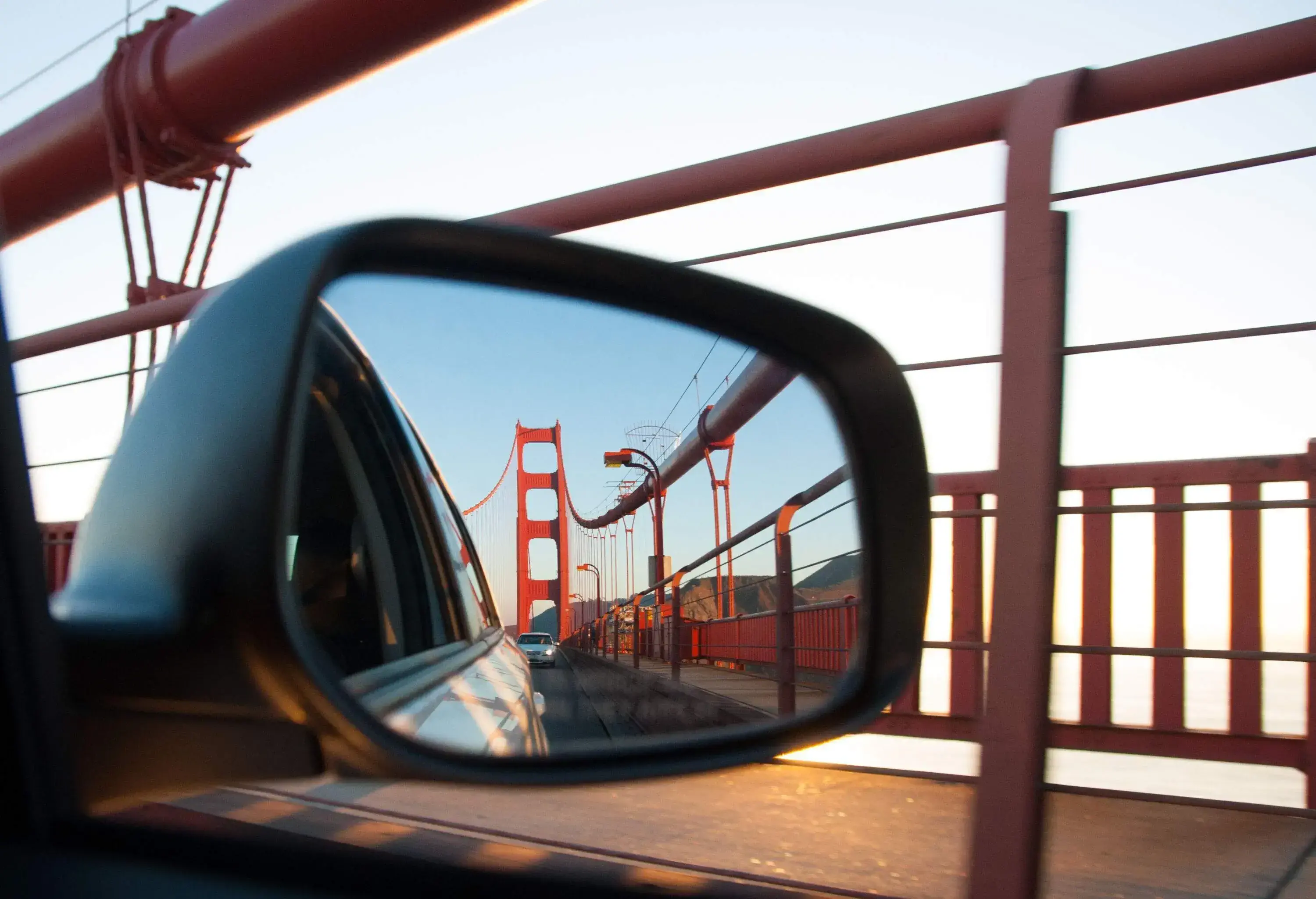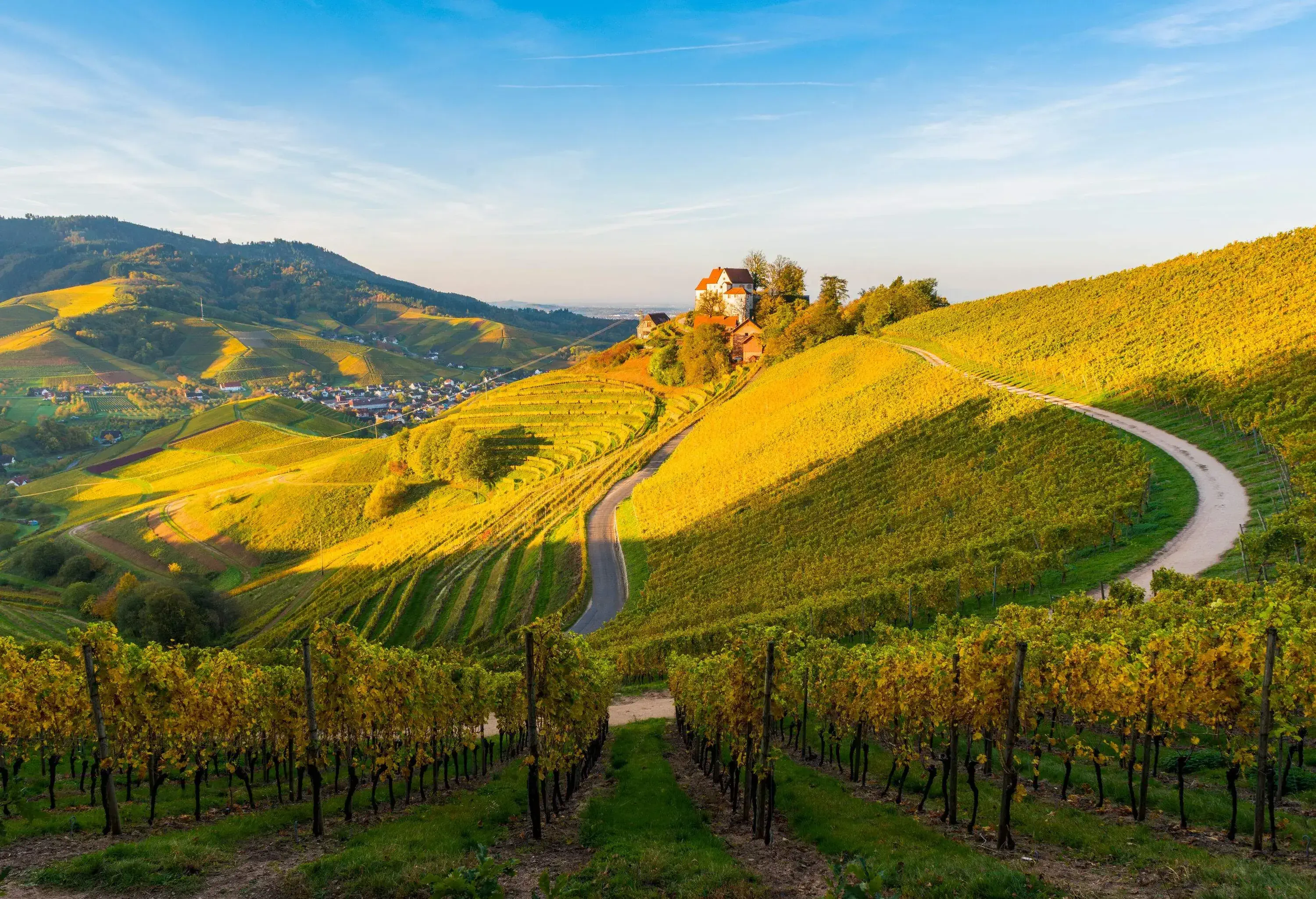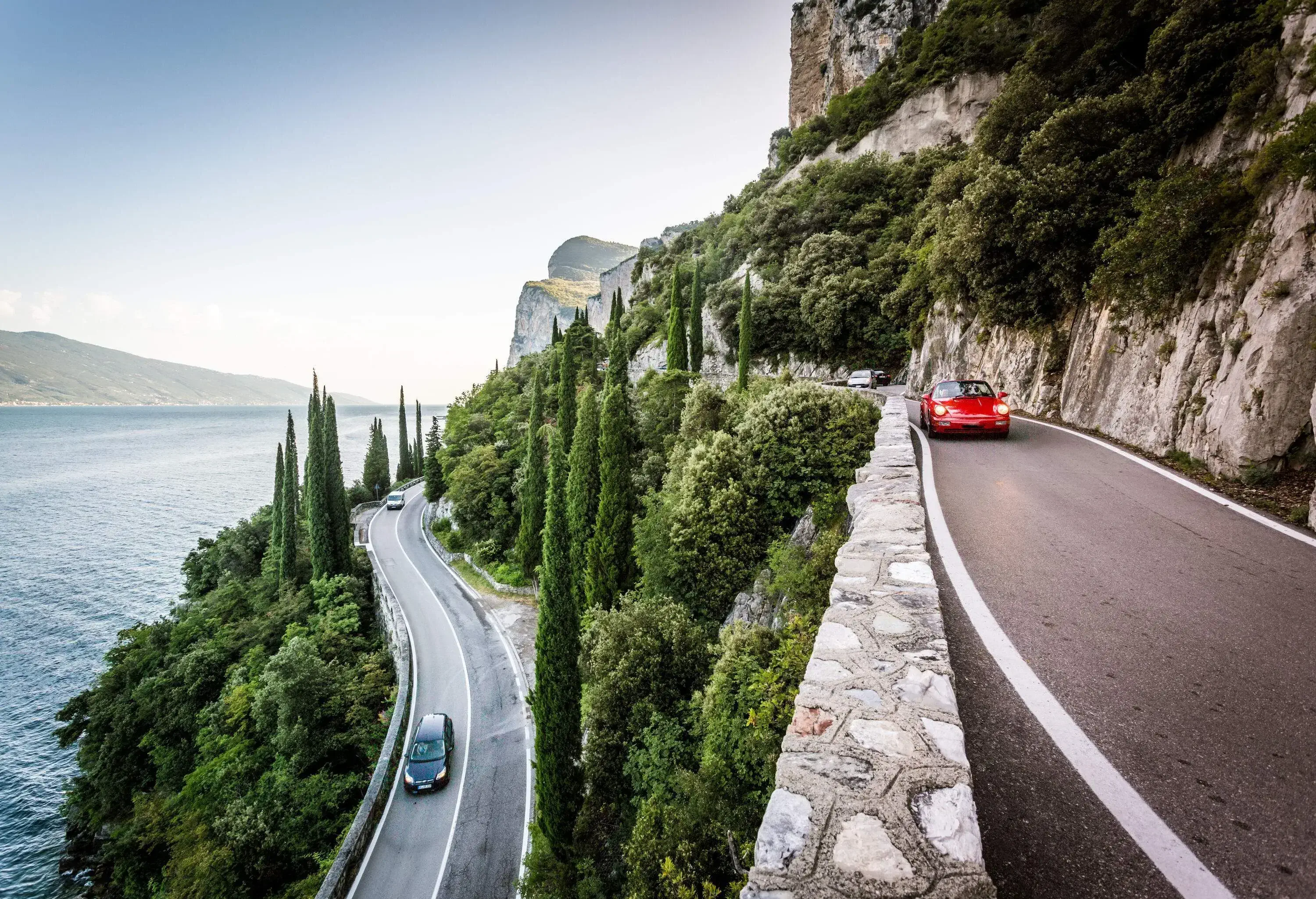Travellers from around the world come to Finnish Lapland for Finland’s Northern Lights. With clear skies and captivating wilderness, it’s one of the best places to see the magical Aurora Borealis. This guide provides an overview of the Northern Lights in Finnish Lapland – where to go, where to stay and how to maximise your chances of seeing them.
What are the Northern Lights?
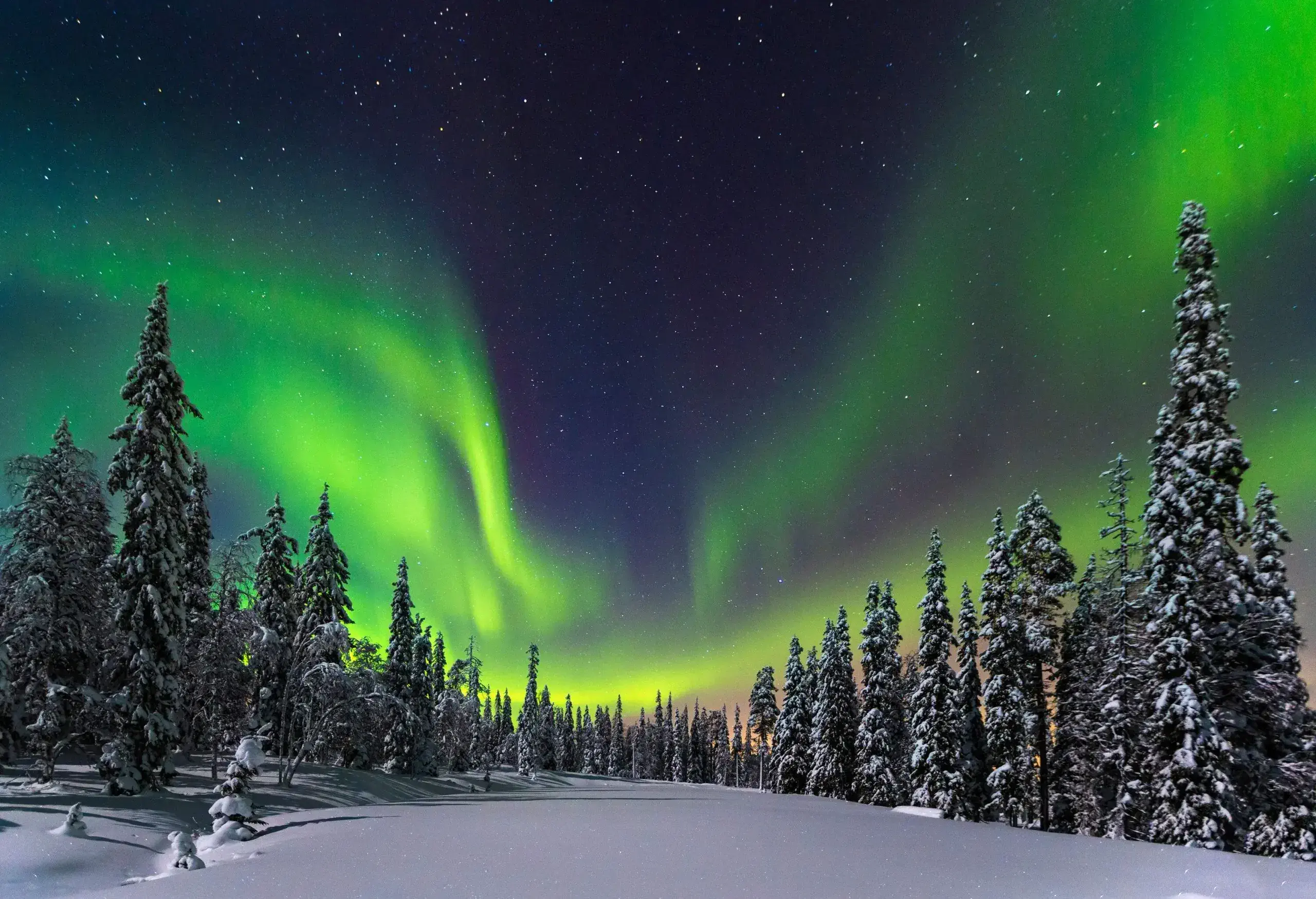
The first step in the creation of the Northern Lights begins over 140 million kilometres away, on the surface of the sun. Solar activity leads to small, electrically charged particles being scattered out into space and some head straight for Earth. The earth’s magnetic field keeps most solar particles from reaching its atmosphere, but a few sneaky ones get through. Once past the magnetic field, these particles collide with other elements in the earth’s atmosphere and that’s when the light show begins.
Where to witness the Northern Lights in Finnish Lapland
To see Finland’s Northern Lights, you first need to be far enough north. The region where the Northern Lights are visible is known as the Auroral Oval and, luckily, Finnish Lapland is firmly inside it. The second thing you need is darkness. This means getting away from cities and civilisation and out into the wilderness, where there’s little to no light pollution.
You will need a little luck. There’s never a guarantee that you’ll see an aurora, but some destinations have better odds than others.
Best places in Finnish Lapland to see the Northern Lights
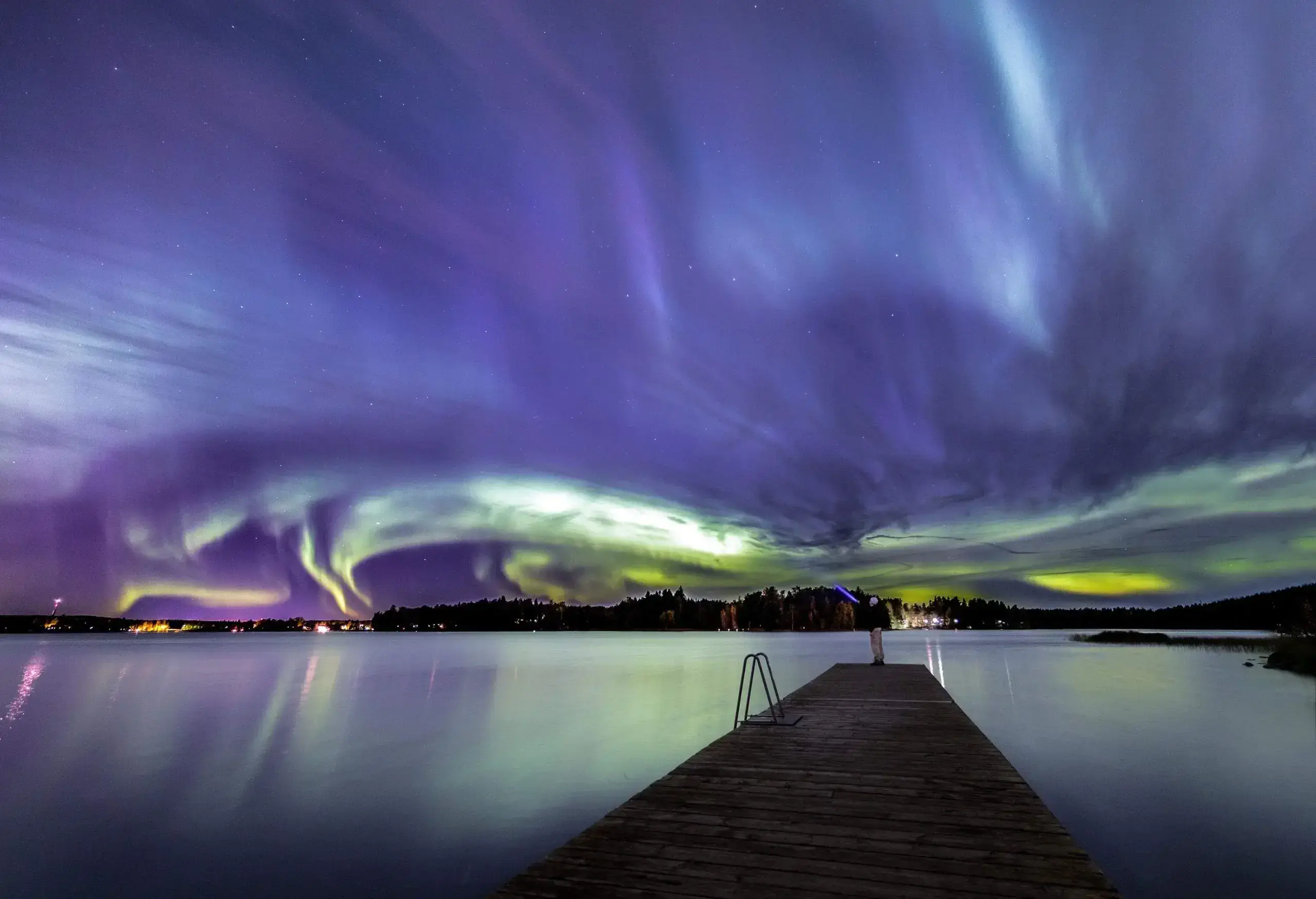
As mentioned, the further north you go, the better odds you have of seeing the Northern Lights. However, anywhere you go in Lapland, you’ll at least have a chance of spotting them. Even south of Lapland, Finland’s Northern Lights show up at least once a month.
Rovaniemi: The place to go Northern Lights hunting at night
The ‘Official Hometown of Santa Claus’ (complete with reindeer-led sleighs and a very important post office), Rovaniemi is the capital of Lapland. Although it’s a larger city, you don’t need to go very far from the Rovaniemi city centre to find stretches of night sky untouched by light pollution.
Go Aurora hunting at night and catch up with Father Christmas himself at the Santa Claus Village during the day. Rovaniemi is an excellent option for anyone hoping to take a guided tour, with lots of companies offering safaris planned to give you the best chance of seeing the aurora. While you’re there, head to the Arktikum Museum to learn more about the local culture and natural features and visit the Rovaniemi Art Museum in Culture House Korundi, to see the northern perspective through art.
Levi: See the Northern Lights during ski season
The best times to see the Northern Lights just so happen to line up with Lapland’s ski season and Levi boasts one of the best ski resorts in Finland. Every year, over 700,000 visitors come to ski 230 kilometres of cross-country tracks and relax in more than 2,000 saunas. Most importantly, Levi averages over 100 Northern Lights sightings each year. It also has plenty of Northern Lights accommodation options, most notably the Northern Lights Village.
Muonio: For reliable Northern Lights sightings in Finnish Lapland
Muonio, nestled in the Pallas-Yllästunturi National Park, is one of the most reliable places in Lapland for Northern Lights viewing, with sightings every other night under the best conditions. Other popular activities in the area include safaris on sleighs pulled by husky or reindeer, skiing, and snowmobile tours.
Inari & Utsjoki: Where Northern Lights and tradition combine
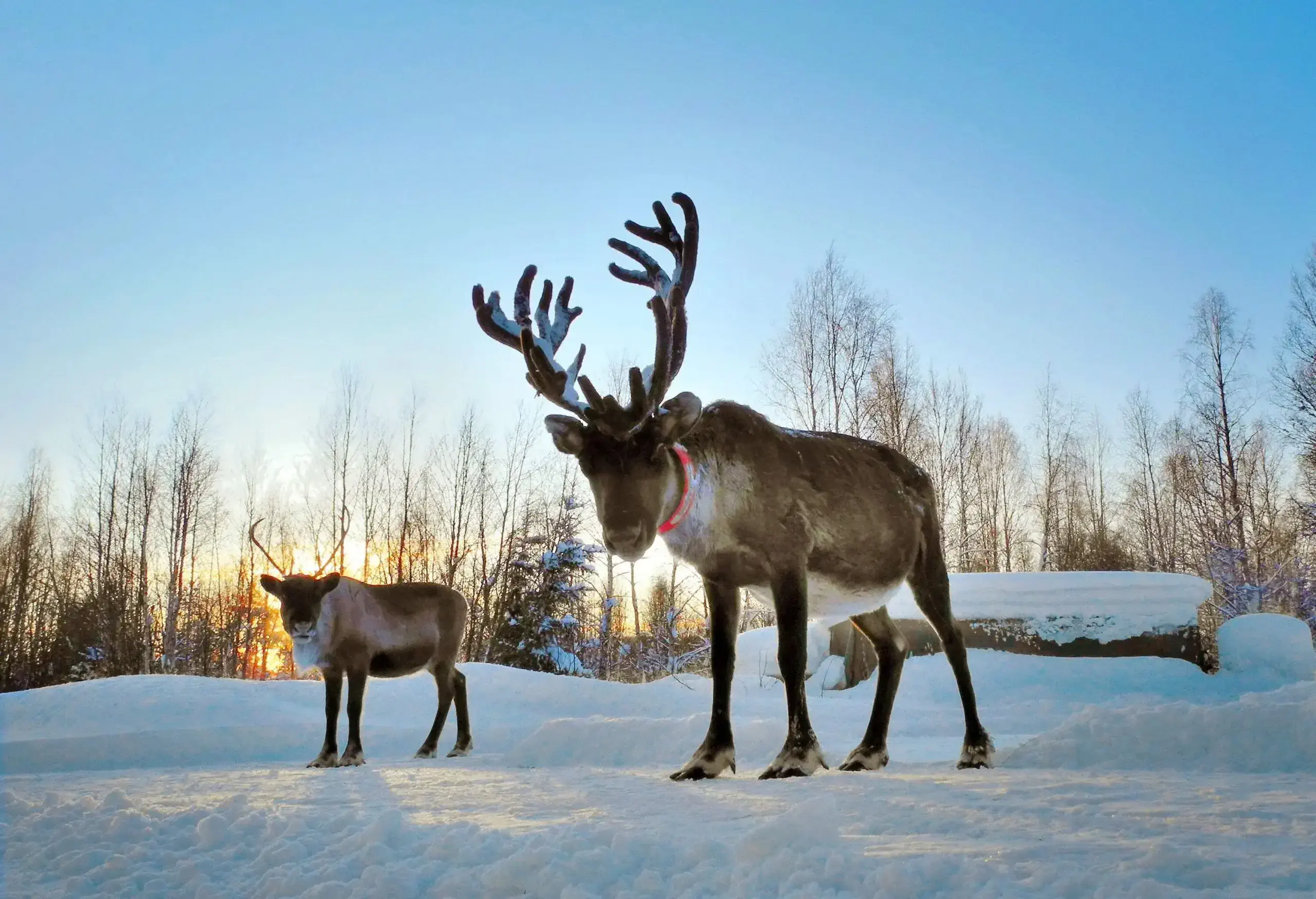
Home of the Sámi parliament, many shops and excursions in Inari are run by Sámi, the indigenous inhabitants of the area. In between Northern Lights spotting, you can learn about reindeer husbandry and Sámi traditions at the Sámi Educational Institute and the Sámi Museum and Nature Centre.
Utsjoki, about one and a half hours north of Inari, is the northernmost municipality in Finland. With the only Sámi majority population in Finland, Utsjoki is another great place to experience Sámi culture and learn about Sámi history.
Solar particles are attracted to the magnetic field from the North Pole, so the further north you go, the better your odds of seeing the lights.
How to plan a Northern Lights trip to Lapland
The first thing to decide when planning your trip to see the Northern Lights is when to go. The best time of year to see the Northern Lights is usually between October and March. In some places, the season starts as early as August and ends as late as May, but early spring usually provides the best combination of dark nights and clear skies. December makes for a magical Christmas, while a February trip is perfect for skiers.
Next, I’d recommend considering whether you want to take a guided tour to see the lights, or if you’d prefer to go on your own. Some destinations will have more tours available than others and some hotels may have their own guides, or offer special tour deals. If you’re heading out on your own, you’ll want to consider parking and transportation options.
Finally, don’t feel you have to stick to one destination. On outdoor-focused trips like this, I love to pack light and move frequently between towns and accommodations if I have the time.
Plan your trip early, as tours and accommodations dedicated to the Northern Lights can fill up fast.
Tips for capturing Finland’s Northern Lights on camera
Some standard recommendations for camera settings will help you capture Finland’s Northern Lights:
- Set the focus to infinity (or simply focus on something very, very far away, like a star)
- Keep the aperture wide on the lowest setting: i.e f/2.8
- ISO at least 1600, increase it for weak auroras.
- Low shutter speed or long exposure mode, between 10 and 25 seconds. The dimmer and slower the aurora, the longer your shutter speed should be.
- Don’t forget to turn off auto flash.
A DSLR (dual lens reflex camera) with a large sensor is a great piece of equipment for Northern Lights photography, but you can take a good photo of the Northern Lights with many high-quality smartphones. Regardless, a tripod is essential; that way, you can set a low shutter speed, get it started (preferably with a remote) and enjoy the lights yourself.
Remember that the tripod may need to sit in up to 30cm of snow at temperatures as low as -30°C. If you’re serious about getting a great pic, don’t forget to consider your gloves when preparing for your trip.
As the lights can come and go quickly, try to have everything set up before they appear and, if getting the perfect shot proves too complicated, just step back and take in the moment. Sometimes it’s the blurry pictures that capture the memory best.
I love layering thinner touchscreen gloves with flip-top mittens for the perfect warmth and dexterity combo.
Northern Lights forecast
Finland’s Northern Lights aren’t easy to predict, but there are plenty of experts who do their best. Popular forecast sites include Aurora Forecast and Space Weather Live. On first look, it can be overwhelming. Just remember you’re looking for a high KP Index, fast solar winds and an Interplanetary Magnetic Field labelled ‘South’.
Best hotels for viewing the Northern Lights in Lapland
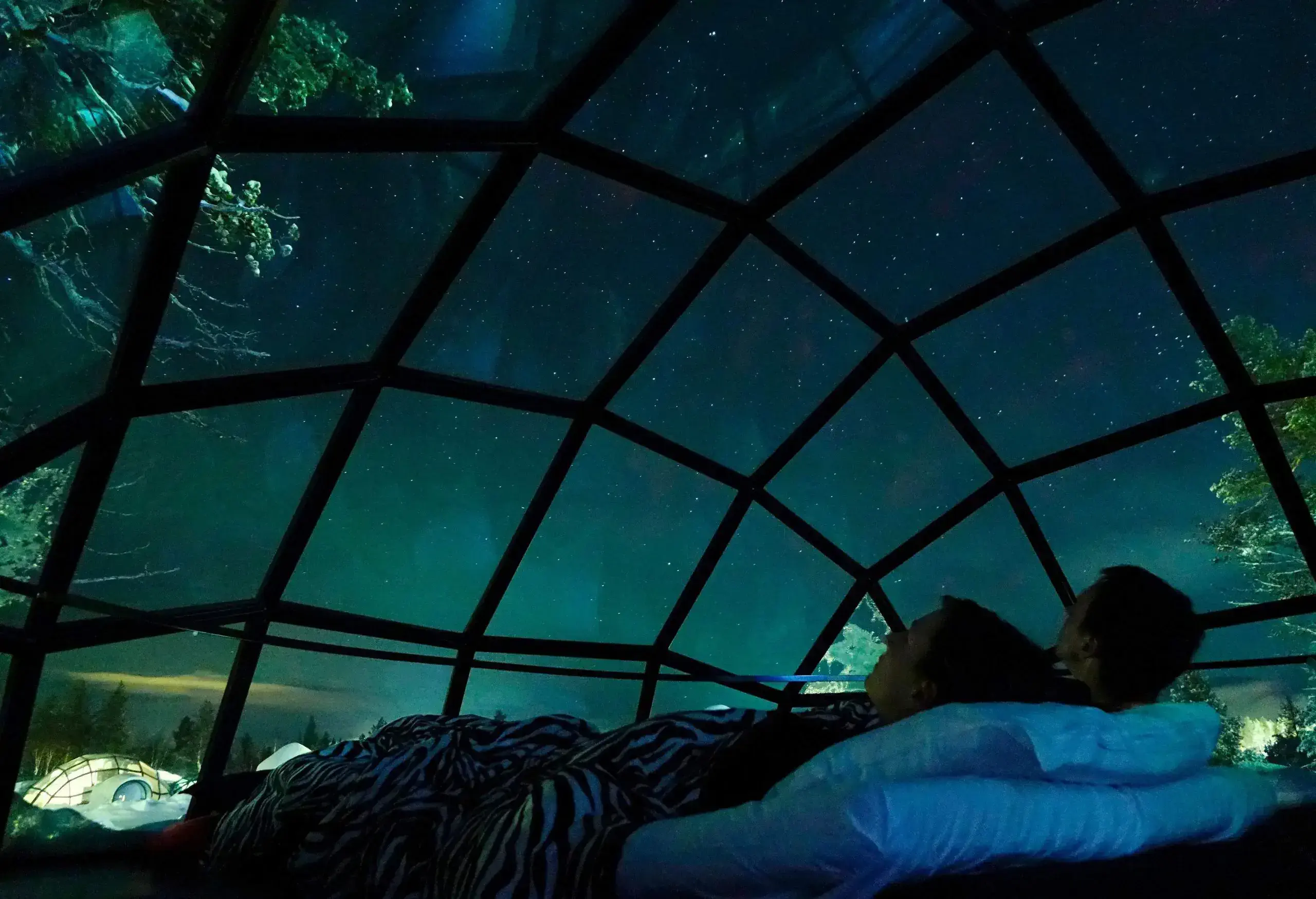
Lapland is full of accommodations specifically designed for seeing the Northern Lights, such as dome-shaped private cottages with glass rooftops that provide an almost uninterrupted view of the night sky. Santa’s Hotels’ Glass Igloos in the Pyhä Luosto National Park include an Aurora Alarm, so you don’t have to worry about sleeping through the lights.
There are also plenty of ways to explore Scandinavia on a budget. One of the best budget-friendly Northern Lights hotels is the Wilderness Hotel Muotka & Igloos in Saariselka.
Northern Lights-specific accommodation usually gets you out into the wilderness, which is perfect for couples looking for a quiet and peaceful place to get away from it all, but may not suit all travellers. If you plan to pack your schedule with other activities and prefer to stay closer to larger settlements, consider booking a hotel in Rovaniemi. The Arctic City Hotel is a great option right in the heart of the city. They offer free parking (including charging points), so it’s easy to hire a car and head out Northern Lights hunting on your own.
As much as the Northern Lights are the goal, when planning your trip, consider what else will make the trip enjoyable for you, even if you don’t see them. Will you love looking back on an adventure hiking through the snow and cruising on husky sleds, or cosy evenings sleeping under the stars? Balance that with the probability of seeing Finland’s Northern Lights and you’ll be sure to make incredible memories no matter what.
If you’re looking for more tips for exploring Scandinavia in winter, KAYAK has you covered. And if you’re interested in more otherworldly sights, check out our guide to the best lunar landscapes.

